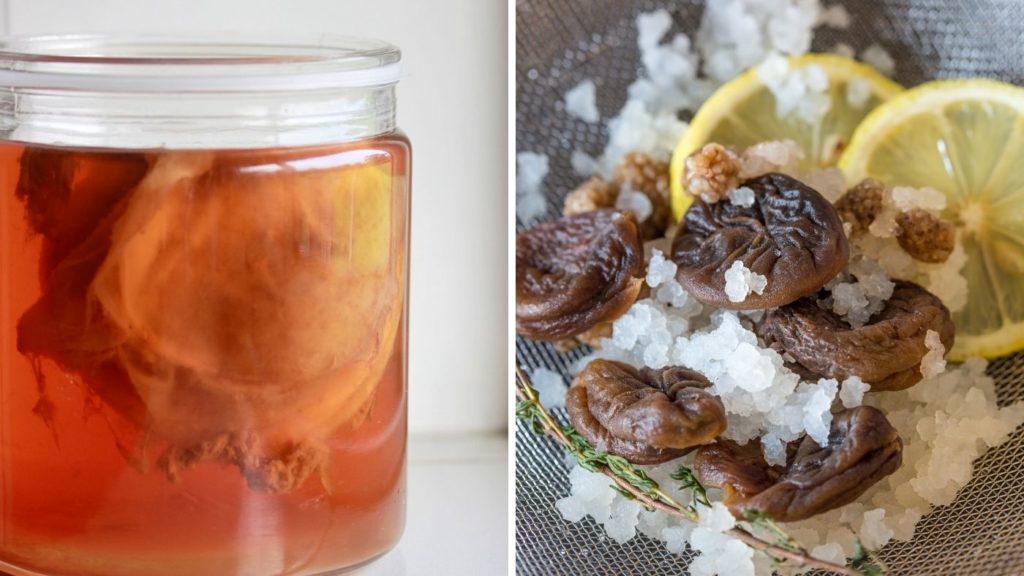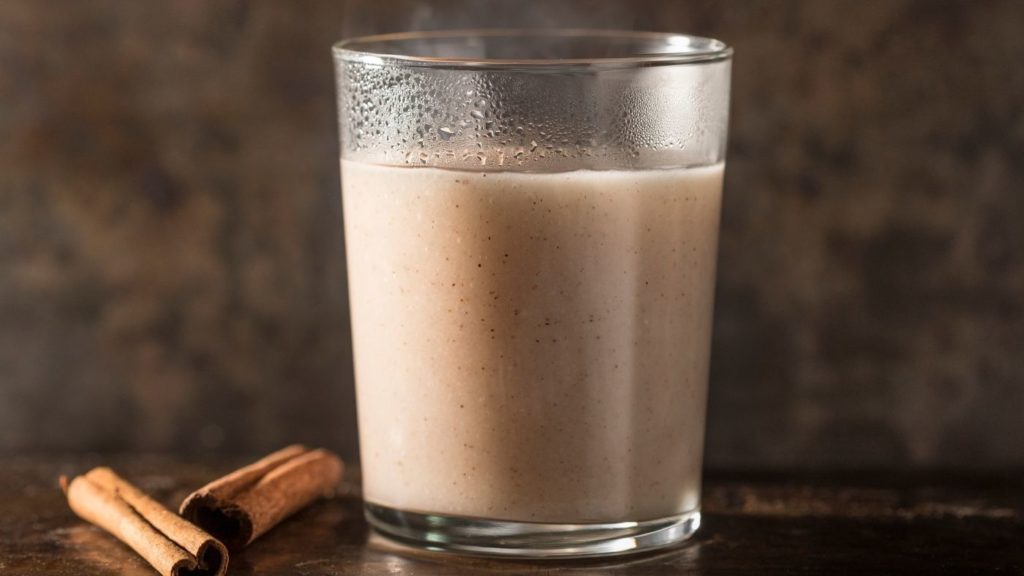Find out how to make vinegar at home with this comprehensive guide!
Vinegar is one of the first condiments in mankind’s history. It is an aromatic ingredient that comes in hundreds of types and flavours, but it is also a useful ingredient for canning or washing windows.
Making vinegar at home is as simple as leaving alcohol outside. The magic of fermentation takes care of the rest!
Homemade vinegar has the power to delight your dishes and your taste buds. Vinegar in cooking can enhance a dish and balance its flavours.
Why just use vinegar from the grocery shop? The world of vinegar extends beyond white vinegar, cider vinegar, and balsamic vinegar. Fermenting vinegar at home opens the door to a whole new world of products.
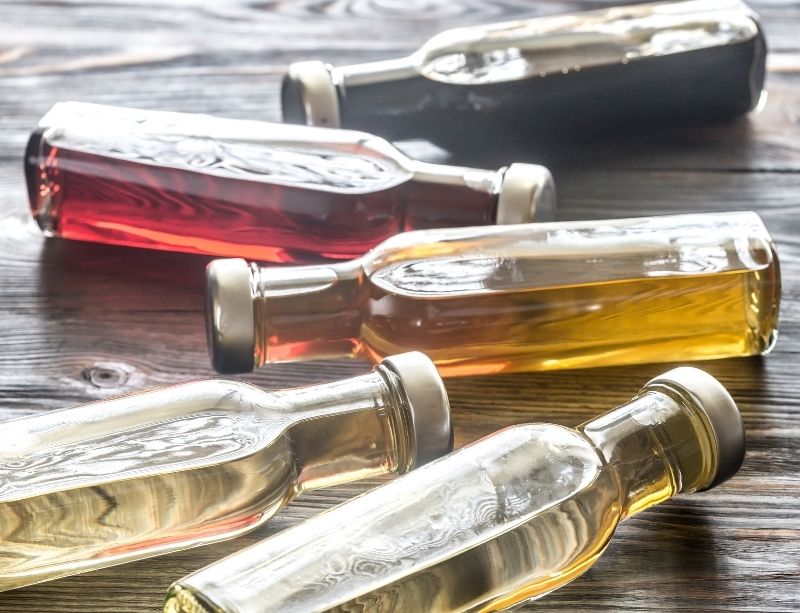
Make your own apple cider vinegar, mead vinegar, or even carrot juice vinegar!
In addition to a recipe for wine vinegar, this guide will give you the basics on how to turn any alcohol into vinegar.
Go directly to the section that interests you:
- Origins of vinegar
- Which ingredients to choose?
- Wine vinegar recipe
- Tips to improve your vinegar production
- Frequently asked questions
Origins of Vinegar
Vinegar is considered the world’s first condiment. It has been used throughout the ages to preserve and sanitize food, cure various diseases, and add flavour to dishes.
The word “vinegar” comes from “sour wine”, meaning wine that has turned sour (acidic) through fermentation. Thanks to acetic acid bacteria, any alcohol left outside has the potential to turn into vinegar if the right conditions are present!
Every civilization, throughout the world and the ages, has developed its own alcohols from the ingredients available in its territory. As vinegar is the natural continuation of any alcohol, every culture had its own vinegar.
The first references to vinegar go back more than 5,000 years. The Babylonians used the fruit and sap of date palms to make vinegar. Urns with traces of vinegar have also been found in ancient Egypt, China, and Greece (ref).
Vinegar was used to purify drinking water, preserve food for long journeys, and to garnish meals. It was also often mixed with water and honey and served as an invigorating drink. Hippocrates, the father of modern medicine, even recommended its use to fight colds and ulcers (ref).
Vinegar Making Process
Preparation of the alcohol
To make vinegar, you need a liquid that contains alcohol. You cannot turn fruit juice directly into vinegar!
If you want to make vinegar with a liquid that does not contain alcohol, you have two choices:
- Ferment the liquid into alcohol using yeast (alcoholic fermentation)
- Add alcohol to the liquid (no fermentation)
Fermentation of Alcohol Into Vinegar
The fermentation of vinegar can then be summarized as follows:

In the presence of oxygen, acetic acid bacteria convert the alcohol into acetic acid, also known as vinegar. This process is called acetic fermentation.
Once the vinegar has properly fermented, it can be aged. Young vinegar is often very aggressive on the palate. The longer the vinegar ages, the more refined and developed the flavours become.
Ingredients for Making Homemade Vinegar
Making vinegar at home requires two main ingredients: alcohol and acetic acid bacteria (don’t worry, they are very easy to find).
The quality of the ingredients will strongly affect the vinegar that is produced.
Alcohol
Any alcohol can be used to make vinegar. If cider and wine are the most often used drinks, vinegar can be made from beer, mead, perry, fruit wine, or even sake.
However, the alcohol concentration of the drink should ideally be between 5 and 9% (after adding the scoby). A too high alcohol content would harm the acetic fermentation process.
If you want to use beverages with an alcohol content above 9%, simply dilute them to reach the right concentration. For more information, go straight to the section on alcohol dilution.
Always choose alcohol without sulphites or additives. These could prevent fermentation.
Microorganisms
To allow the fermentation of alcohol into vinegar, you need to make sure that enough microorganisms are added. This is the critical mass that allows the colony to be self-sustaining.
You can also simply leave the alcohol out in the open. Acetic acid bacteria are present in the air, and they will sooner or later colonize any alcohol left unattended.
However, wild fermentations take longer to occur, and results can vary and sometimes fail.
To properly guide the fermentation, we recommend seeding the alcohol with a mother of vinegar. The mother of vinegar is a liquid filled with acetic acid bacteria. It is best to use about 20% of mother vinegar to the volume of alcohol.
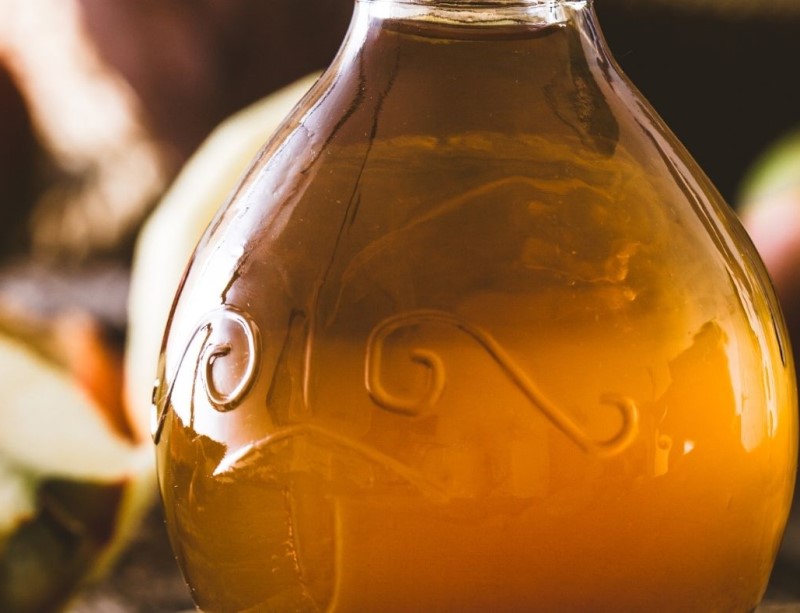
For example, if you have 1L of cider, you should add 200ml of mother of vinegar.
For more information, see What is a mother of vinegar?
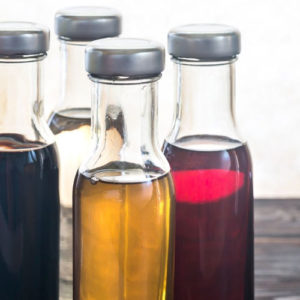
Wine Vinegar Recipe
Ingredients
- 1.5 liter organic wine
- 250 ml filtered water
- 350 ml unpasteurized vinegar (or a mother of vinegar)
Steps
- Wash and rinse thoroughly the glass jar
- Pour the wine, water, and vinegar into the jar. Mix well
- Cover the jar with the cotton cloth. Secure with the rubber band
- Let it stand at room temperature for 3 months
- Taste. If you like the acidity, bottle. If you wish, keep the mother of vinegar and a little vinegar for your next recipe
- Use immediately, or age in bottle for a few more months.
Notes
How to Dilute Alcoholic Beverages to Make Vinegar?
All alcoholic beverages (vodka, brandy, sake, etc.) can be made into vinegar, but they must first be diluted to the appropriate concentration for fermentation.
Alcohol concentration should be between 5 and 9%. Above 9%, alcohol can interfere with fermentation.
The easiest way to dilute alcohol is to add water. To find out how much water to add, get out your calculator!
To calculate the amount of water to add, simply use this formula:

For example, if we have 1L of 40% alcohol, and we want to reduce its alcohol concentration to 8%, we would have to do these calculations:

So, water should be added to the alcohol until you have 5L of 8% alcohol.
You can also dilute the alcohol with other ingredients, such as vegetable juice or infusions. For example, by combining 1 litre of carrot juice and 225ml of 40% vodka, you can obtain a liquid that could be used to make carrot vinegar.
Note: The mother of vinegar and the added vinegar also dilute the alcohol to an alcohol concentration suitable for acetic acid bacteria.
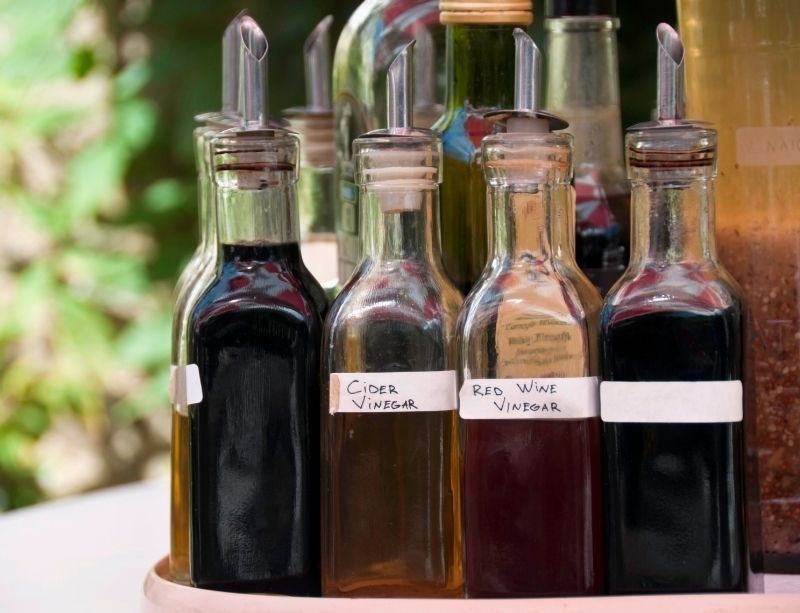
How to Make an Even Better Vinegar?
Making vinegar is simple and can be done by anyone. However, you can raise your vinegar production to a higher level with a few techniques.
1. Aerate during fermentation
Oxygen is essential for the fermentation of wine into vinegar. To speed up the fermentation of vinegar, you can increase the oxygenation level of the liquid.
For example, an aquarium air pump can be installed in the jar. This technique allows you to produce vinegar in just ten days!
No air pump on hand? Simply stir the vinegar daily to speed up the process.
2. Aging to develop flavours
Young vinegars are often very acidic on the palate and lack roundness.
Aging vinegar in bottles allows new flavours to develop. New aromatic molecules are created during aging.
Bottles should be well sealed, protected from direct sunlight, and must be airtight.
3. Flavouring Before Fermentation
Any new ingredient can be turned into vinegar!
Simply add strong alcohol like vodka, brandy, or ethanol to a liquid to ferment, such as celery, carrot, or even pumpkin juice. Follow the instructions under the section on diluting alcohol.
You can also add oak chips, herbs, or dried fruit to your fermenting vinegar. Be careful that all ingredients are always well submerged to avoid mould.
4. Flavouring the Vinegar After Fermentation
During the bottling process, ingredients can be added to flavour the vinegar while it is aging. A few oak chips, a sprig of rosemary, or some hot peppers can open new horizons.
You can also make fire vinegar by covering garlic, onions, ginger, turmeric, and other plants of your choice with vinegar. After a few weeks of maceration, you’ll have an ironclad tonic!
Vinegar is also perfect for capturing all the berry flavours. Learn more about this from our berry shrub recipe.
Frequently Asked Questions
Do I need a mother of vinegar to make vinegar?
No, a mother of vinegar is not essential to make vinegar.
It is possible to make vinegar with a kombucha scoby, unpasteurized vinegar, or even with wild yeast. For more information, see What is a mother of vinegar?
Can I make vinegar with strong alcohol?
Yes, but you must dilute the alcohol before fermenting it. A too high concentration of alcohol could impede the fermentation process.
For more information, check out the section on diluting alcohol to make vinegar.
Can I make vinegar with fruit or vegetable juice?
Yes, but there must be alcohol in the liquid.
You cannot go directly from fruit or vegetable juice to vinegar. Microorganisms cannot transform sugar into vinegar.
However, there are several options:
- You can turn juice into alcohol, using champagne yeast, wild yeast, or bread yeast. For more information, check out our Apple Cider and Vinegar recipe.
- Alcohol can be added to the juice and then fermented into vinegar.
- Kombucha can be flavoured with this juice, then left to ferment.
Can I make vinegar from fruit peels?
Several recipes on the Internet use apple peels and fruit scraps to make vinegar. Since peels contain yeast and sugar, these recipes can sometimes work.
However, this technique has a higher failure rate. Mould can quickly set in, leading to recipe failure.
We prefer to ferment directly from alcohol to maximize the chances of success.
Why does my vinegar taste like water?
When vinegar ferments out in the open for too long, it can excessively oxidize and lose its acidity and flavour.
To avoid this problem, bottle the vinegar in airtight bottles when the desired acidity is reached.
Why is my fermentation slow?
Is your vinegar not fermenting fast enough to your liking? Or is there no sign of fermentation? There are several reasons for this.
- Problem: The fermentation temperature is below 20°C
- Solution: Wait, or raise the temperature between 25 and 30°C (77 and 86°F)
- Problem: The mother of vinegar was too weak or pasteurized
- Solution: Wait for wild yeast to take over or add a little unpasteurized vinegar.
- Problem: Too much alcohol prevents fermentation
- Solution: Dilute by adding water.
- Problem: The alcohol used contained sulphites
- Solution: Aerate the mixture thoroughly or use another method to remove the sulphites.
